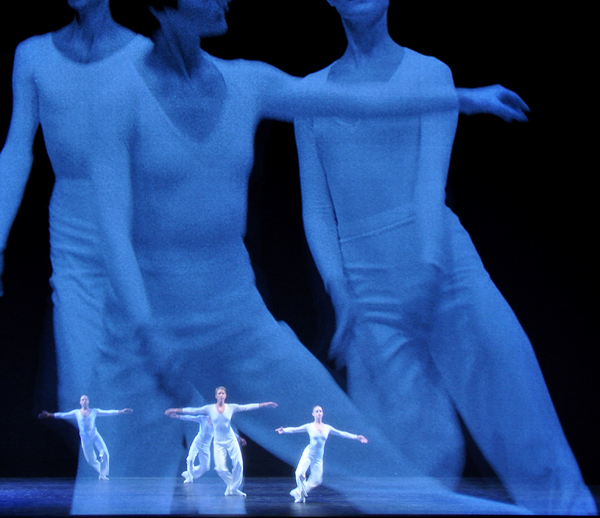Martha Ullman West, Art Scatter’s chief correspondent, spent Thursday night at White Bird, watching Lucinda Childs‘ minimalist landmark “Dance.” (It repeats Friday and Saturday nights at Portland’s Newmark Theatre.) For Martha, who also reviewed the American premiere at the Brooklyn Academy of Music, Thursday’s show was a felicitous rediscovery.

By Martha Ullman West
Thirty-one years ago, dear lord, I saw and wrote about for Dance Magazine the American premiere of Lucinda Childs’ Dance at the Brooklyn Academy of Music. Philip Glass was in the pit, and the large house was packed with New York’s self-styled intelligentsia.
I thought it had good stuff in it, but came close to agreeing with my husband, who wearily muttered to me as we staggered down BAM’s steps and headed for the subway, “Minimalism is of minimal interest.”
So when I went last night to the Newmark to see the revival of this work, I was extremely curious to know how I would respond after three decades of watching and writing about dancing, of many kinds, in many places.
Dance, which has three sections (giving it the beginning, middle and end lacking in so much contemporary dance these days) strikes me now as a very beautiful work, indeed, and a playful one.
Childs takes a small, unembellished vocabulary of arm movements and turns, repeats them many times, but riffs on them as Glass does with the rhythms of his score. Three decades ago, she herself performed the solo that is the middle dance, adding some skipping to the basic vocabulary of the first dance. Caitlin Scranton, who looks remarkably like Childs, dances it now, minus some of the jagged edginess of the choreographer’s performance.
One of the ground-breaking aspects of this work in 1979 was the integration of film, made by painter Sol LeWitt, into the choreography, so that at times the live dancers appeared to be performing with filmed images of themselves. Since the original film is used with a completely different cast of dancers, the work doesn’t look the same at all, and in fact, provides documentation of changes in technique and stage presentation. Today’s dancers have a technical ease that the original cast didn’t have, and I hasten to say they looked very beautiful indeed. However, that achievement of perfection means a loss of humanity: the dancers on screen had an individuality that was difficult to discern among the live performers.
What I didn’t really notice the first time around was the playfulness of the filming, and the manipulation of the image of the filmed floor to make you think the dancers are about to fall off the edge. That’s a very wonderful thing to see, as an enhancement of Childs’ choreography and Glass’s score. And viewing Dance in the smaller confines of the Newmark means its fine-tuned details are much easier to take in, giving you a great deal to think about after the performance ends. I can’t think of higher praise, frankly, for any work of art.
*
Lucinda Childs dancers and film images in “Dance.” Photo: Sally Cohn